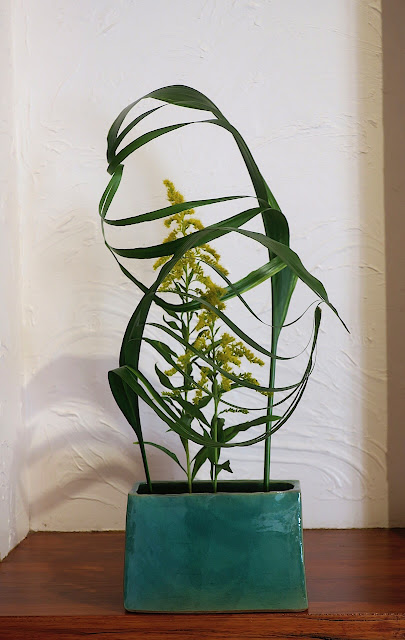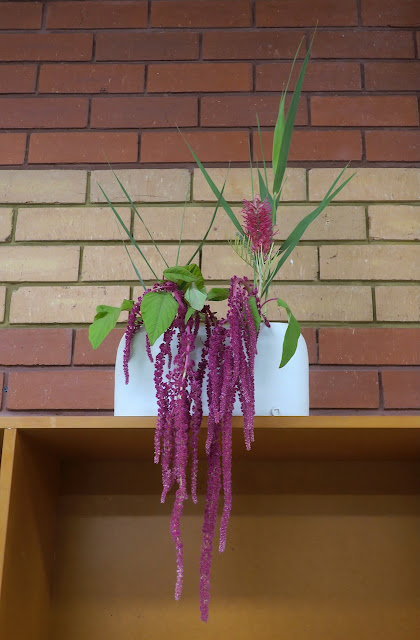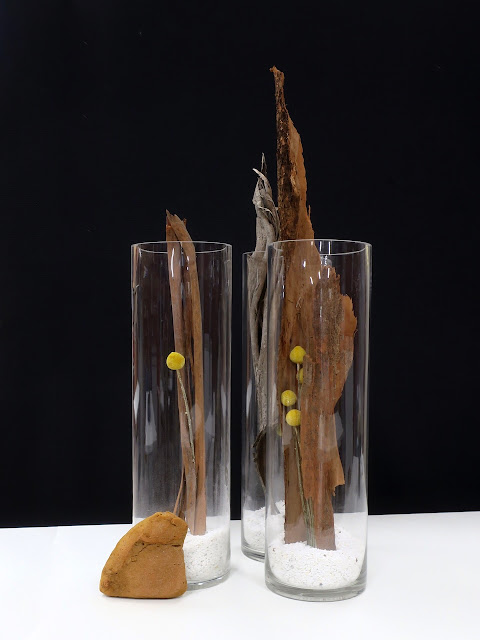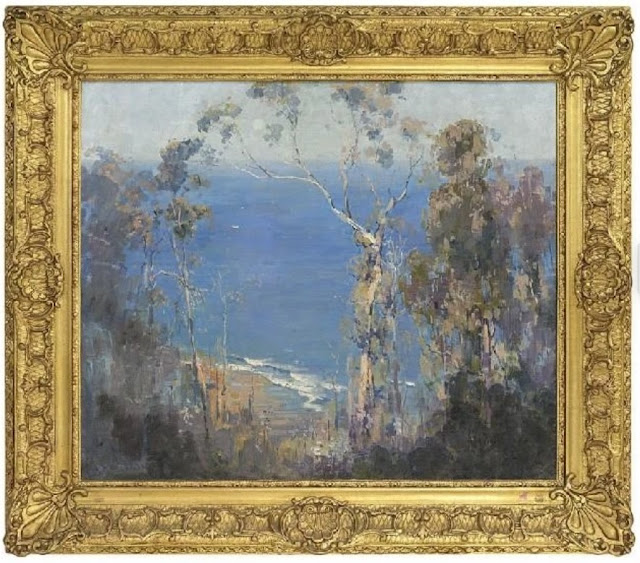Yesterday was partially cloudy with a slightly chilly wind from the south when we had a walk in Iron Bark Basin, part of the Great Otway National Park.
The dense bush on the right of the path has an understory dominated by small Grass Trees Xanthorrhoea Australis. These Grass Trees all appeared during the natural regeneration after the 1983 bushfires. Hence they are much the same height and may eventually grow to over 3 metres tall. The left side of the path is bare because it has been slashed as a fire break.
Some sections of this path provide glimpses of the sea several hundred metres away.
It always reminds me of Arthur Streeton's painting "Ocean Blue, Lorne" brought into the Geelong Art Gallery collection in 2011.
In my Melbourne class last week I set the exercise of creating an ikebana using 'Green Plant Materials", a subject from the Sogetsu extended curriculum. Green is a particularly pervasive colour in the plant world therefore, it is important to turn our attention to that fact. The exercise encourages the ikebanist to discriminate between different greens and, in so doing, reveal them to the casual observer.
.jpeg)
Aileen used Gymea leaves for the main lines and then added a single Fatsia Japonica leaf and a small bunch of green berries. The vertical lines, together with the space created, provide the strong elements of the design; while the leaf and berries invite a closer look.
Jacqueline got busy changing the appearance of her stem of Cordyline so that it didn't look like a small palm tree. She then added an Escheveria rosette and a small stem of Camelia leaves.
Marisha also had a stem of Cordyline, variegated in this case. The manipulation of her leaves made such a bold design that only a small bunch of Dwarf Nandina could be added without weakening her design.
Eugenia used a single leaf of Sansevieria which she had manipulated to create a bold line. The colour and bold line matched closely the colour and strong lines in the vase. To this she added some fine green lines of Mistletoe Cactus Rhipsalis, and a small bunch of Clivia berries.
This week the Belladona lilies, originally from my parents garden, have finally flowered. Last year we were in New Zealand at this time and I missed the opportunity to use them in an ikebana. I was keen to use them in my ikebana because of the memories they recall for me.
 a
aI also wanted to use the Sedum Autumn Joy, (a Hylotelephium hybrid) because it provides a good colour harmony with the Belladonna lily.
I have arranged the two materials naturalistically closely placing the Belladonna stems to emphasise their vertical movement. Unfortunately, I did not photograph them as soon as I finished the ikebana; and in the warm room two more of the flowers opened. The consequence was that I missed the strength of the buds reaching upward. However, it reminds me that ikebana can be translated as "living flowers". The rich pink of the Sedum flowers and the green leaves make a strong mass at the base of the ikebana.
Greetings from Christopher
3rd March 2024










.jpeg)
.jpeg)
.jpeg)
.jpeg)
.jpeg)
.jpeg)












.jpeg)




.jpeg)






